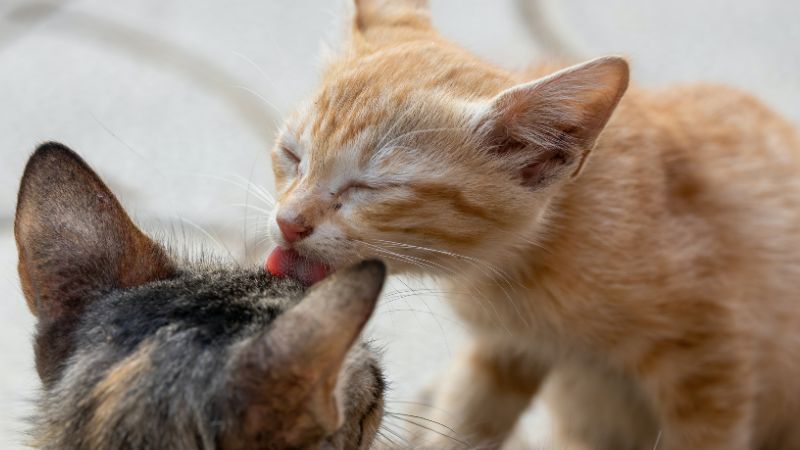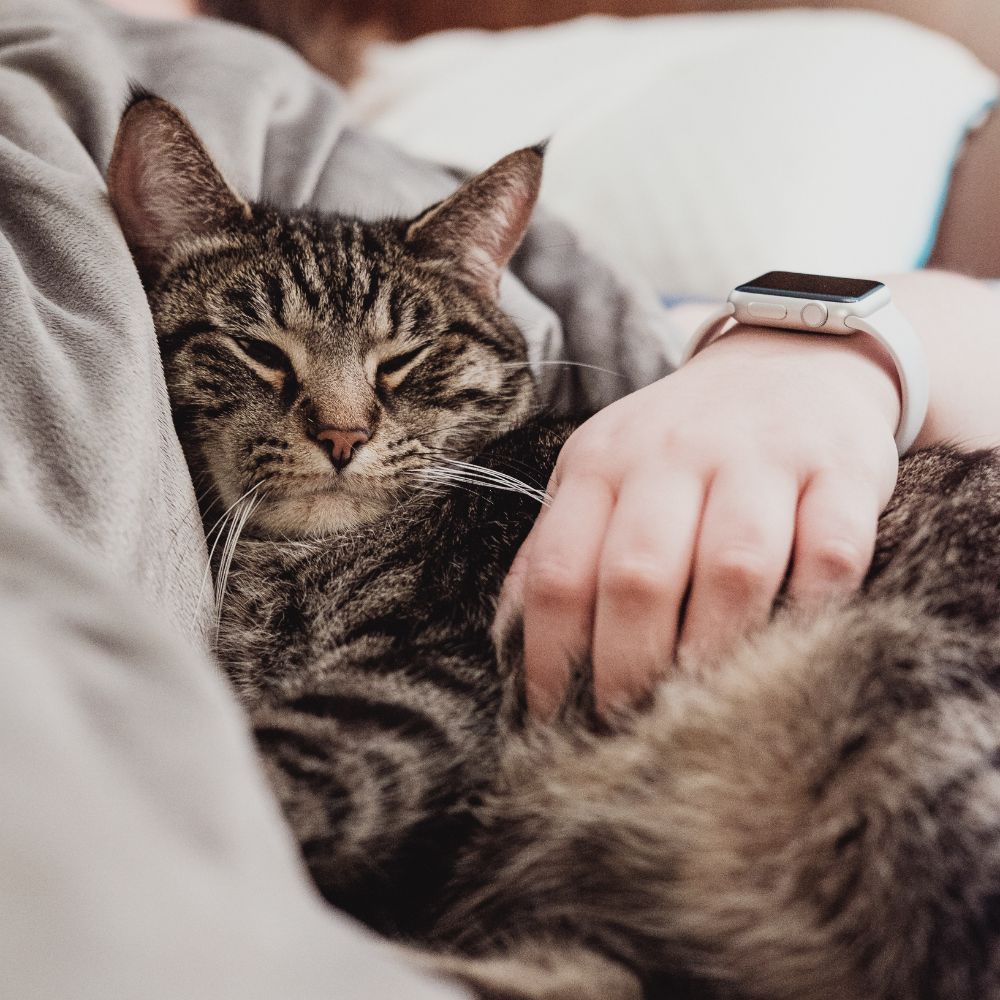Understanding Why Cats Groom Each Other
Have you ever observed cats grooming each other and pondered the reasons behind this intriguing behavior? Is it merely an act of hygiene, or is there something more profound at play? In this article, we will delve into the captivating science behind why cats groom one another, exploring every aspect of feline affection – from evolutionary and biological factors to social and emotional dynamics.
You'll discover that cat grooming, or cats licking each other, goes beyond maintaining cleanliness. It's also about bonding, communicating, and fostering relationships between mother cats, newborn kittens, young cats, adult cats, and even domestic cats living in multi-cat households. We'll unravel the reasons why cats, particularly indoor cats, engage in this grooming behavior, and how they use it to establish trust and form close attachments with their littermates, other cats in their social group, and even their human companions.
As we journey through the world of social grooming, we'll examine the role of the dominant cat in a multi-cat household and how two or more cats can develop strong bonds through mutual grooming. You'll learn about the different stages of feline life, from a newborn kitten to two adult cats, and how grooming behavior evolves over time.
By exploring the science behind cats licking each other, we can gain a deeper understanding of our feline friends and the complex ways they express affection. So, let's embark on this fascinating journey together and uncover the captivating world of feline affection, where grooming transcends the mundane and becomes a language of love.
Evolutionary & Biological Reasons for Licking
Cats are fascinating creatures and watching them groom each other is a heartwarming sight. While we might think of licking as just a simple act of hygiene, there is much more to this behavior than meets the eye. From an evolutionary and biological standpoint, licking is a natural behavior for cats, serving both practical and emotional purposes.
Starting from birth, a mother cat grooms her kittens, stimulating their bodies to eliminate waste and encouraging circulation. This grooming is critical in establishing a social hierarchy within the litter and building trust between the mother cat and her kittens. As the kittens grow older and start to interact with other cats, they continue to use licking as a way to show affection and establish relationships.
Licking is also a way for cats to communicate with each other, and it helps to reinforce social bonds. When one cat licks another, it releases endorphins that produce feelings of pleasure and comfort. These endorphins help to reduce stress levels and reinforce the social bond between cats. Licking is also used as a way of establishing dominance within a social group. When a higher-ranking cat licks a lower-ranking one, it can be seen as a sign of acceptance and submission.
From a biological perspective, cats are fastidious groomers by nature, and when they lick each other, they help to remove dirt and debris that their rough tongues can easily pick up. Additionally, cats will often groom each other in areas that they cannot reach themselves, such as around the ears and on top of the head. This mutual grooming serves as a way to reinforce the bond between cats and helps to keep them clean and healthy.
Interestingly, licking isn't just limited to cats within the same social group. Many cats also extend this behavior to their human companions. When a cat licks its owner, it's a sign of trust and affection, and it is often used to bond with their favorite human. However, cats also use licking as a way to groom their owners, much like how they groom themselves or other cats. So, while it may be a sign of affection, it's not always one-sided.
Allogrooming Adventures: The Wild Side of Social Spa Sessions
Welcome to the wild and wonderful world of allogrooming, a term that might sound like the latest beauty trend, but it's actually nature's very own spa treatment! Allogrooming refers to the delightful practice where animals groom one another, often seen in social species that understand the importance of good hygiene and bonding. Why do critters engage in this fur-tastic behavior? Well, they've discovered that allogrooming not only keeps them spick and span, but also acts as a stress buster and relationship builder.
Imagine getting a massage while bonding with your bestie - that's allogrooming in a nutshell! From primates picking fleas off each other to birds preening their partners' feathers, the animal kingdom is brimming with examples of allogrooming aficionados. Different species have their own grooming gadgets: beaks, claws, or even specialized teeth called "grooming combs." So, the next time you find yourself envious of an impala getting a thorough grooming session from its oxpecker buddies, remember that cleanliness is next to togetherness in the world of allogrooming!

Social & Emotional Aspects of Licking
Licking is a behavior that serves many practical and emotional purposes for cats. When one cat licks another, it's not just about keeping them clean; it's also about building social bonds and establishing trust. Through licking, cats communicate with each other, and they use this behavior as a way to reduce stress levels and reinforce the social bond between the cats.
When a cat licks another, it releases endorphins that produce feelings of pleasure and comfort. These endorphins help to reduce stress levels in both the cat doing the licking and the cat being licked. This creates a positive association with the other cat, strengthening the social bond between the two.
Cats also use licking as a way to establish dominance within their social group. When a higher-ranking cat licks a lower-ranking cat, it can be seen as a sign of acceptance and submission. Similarly, when one cat grooms another, it can be seen as a way of reinforcing the social hierarchy within the group. This kind of communication is critical for feline social dynamics, as it helps maintain order within the group and keeps everyone functioning smoothly.
Interestingly, licking is not always reserved for cats within the same social group. Many cats will also extend this behavior to their human companions. When a cat licks its owner, it's often used as a way to bond with their favorite human. It's important to note that while this behavior may seem cute or endearing, it can also be a sign of stress or anxiety in some cases.
Licking Between Cats & Humans

The act of licking is not just limited to cats within the same social group. Many cats also extend this behavior to their human companions, and it's often seen as a sign of trust and affection. When a cat licks its owner, it's a way of bonding with their favorite human. However, it's crucial to note that cats also use licking as a way to groom their owners, much like how they groom each other.
While it might seem like a simple act, when a cat licks its owner, it can provide stress relief for both the cat and the human. The endorphins released during licking produce feelings of pleasure and comfort, which can help reduce anxiety and promote relaxation. The act of petting or cuddling with a cat while they lick can be an incredibly calming and therapeutic experience.
Furthermore, cats may also use licking as a way to show gratitude towards their owners. For instance, cats who have been rescued from shelters or have been through traumatic experiences may become extremely attached to their owners. In such cases, licking is used as a way of showing appreciation for their owners' kindness and care. Therefore, if your cat licks you, it's essential to understand that it's not just a random behavior; rather, it's a clear sign of affection and gratitude.
It's important to note that while licking is often seen as an act of love and affection, there are instances when it could indicate other behavioral patterns. For example, some cats may lick obsessively, which could be a sign of compulsive behavior. If you notice excessive licking in your cat, it's advisable to consult a veterinarian to determine the underlying cause.
The Licking Language of Cats: From Social Bonds to Bonding with Owners
The act of licking is not just about maintaining hygiene; it's an essential part of how cats bond with each other and their human companions. When cats lick each other, they release endorphins that create feelings of pleasure and comfort, reducing stress levels and strengthening social bonds. Licking is also used as a way of establishing dominance within social groups, helping to maintain order within the group.
When cats lick their owners, it's often seen as a sign of trust, affection, and gratitude. The endorphins released during licking produce feelings of pleasure and comfort, which can help reduce anxiety and promote relaxation. The act of petting or cuddling with your cat while they lick can be an incredibly calming and therapeutic experience.
Excessive licking in cats could indicate compulsive behavior, and if you notice such behavior in your cat, it's advisable to consult a veterinarian to determine the underlying cause.
Pawsitively Connected: A Feline Love Language Finale
To sum it up, unraveling the mystery behind why cats lick each other and their beloved humans allows us to fortify the bond we share with our feline friends. By recognizing the importance of this endearing behavior, we gain a deeper understanding and admiration for these extraordinary creatures and the distinctive ways they express their affection and connect with us. So, the next time your cat graces you with a tender lick, embrace the moment and cherish the special language of love that transcends species.
Thanks for Reading-
Ky & J
Related Reads:









